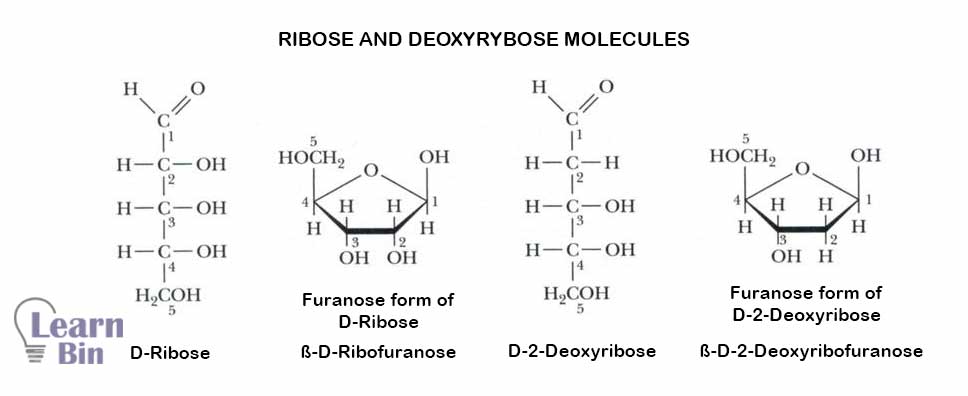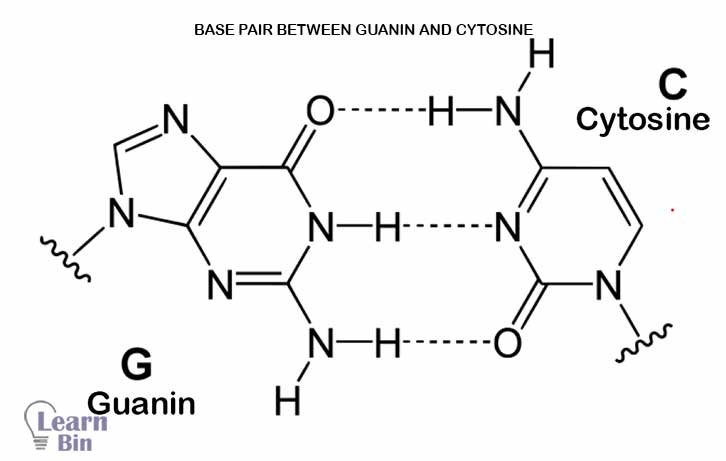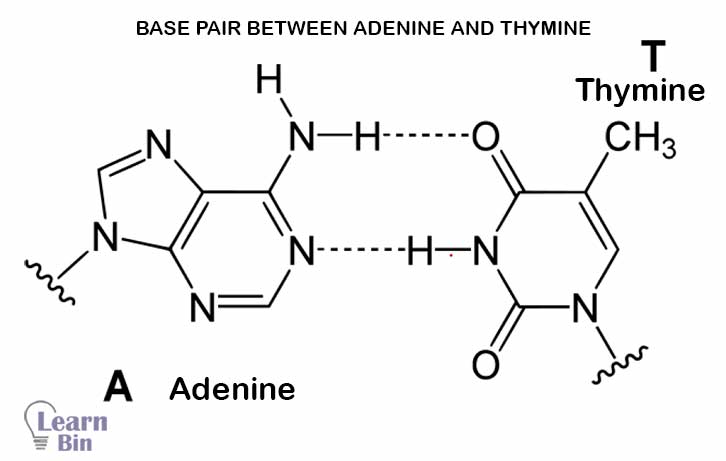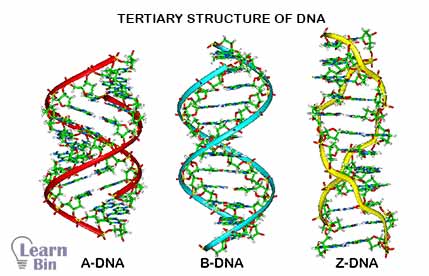More results...


DNA is a type of Nucleic acid that is also known as “Deoxyribonucleic Acid”. DNA is one of the fundamental molecules of life. This article is a basic introduction to what is DNA.
In Cells, there are two types of nucleic acids that can be founded. Those are DNA and RNA. These are Biopolymers. Nucleic acid is made out of a monomer called “Nucleotide”. DNA plays an important role in cells. It contains and transmits the genetic information of a cell. And it controls all the cell processes.
The basic building block of nucleic acids is a nucleotide. A nucleotide is made out of 3 components. Those components are a pentose sugar molecule, a nitrogenous base, and a phosphate group (PO43-).
DNA is made out of nucleotides, that contain deoxyribose sugar and RNA has made out of nucleotides that contain Ribose sugar. Both Ribose and deoxyribose are monosaccharides /sugar molecules that predominantly exist in the cyclic form.

Two types of nitrogenous bases can be found in nucleotides.
| Purine bases | Pyrimidine bases |
| Adenine (A) Guanine (G) | Uracil (U) Thymine (T) Cytosine (C) |
Uracil only can be found in RNA and Thymine is only can be found in DNA. The nitrogenous base is bonded to the 1st Carbon atom in the pentose sugar by a glycosidic bond and the Phosphate group is bonded to the 5th Carbon atom in the pentose sugar by an ester bond.
Nucleotides without phosphate group are called “Nucleoside”. A nucleoside is only contained a sugar molecule and a Purine base or Pyrimidine base. Nucleosides are reacted with Phosphoric acid (H3PO4) to form Nucleotides. Nucleotides have bonded to each other by “Phosphodiester bonds” to form nucleic acids.
| Nucleoside | Nucleotide | Common name |
| Adenosine | Adenosine monophosphate (AMP) | Adenylic acid |
| Guanosine | Guanosine monophosphate (GMP) | Guanylic acid |
| Cytidine | Cytidine monophosphate (CMP) | Cytidylic acid |
| Uridine | Uridine monophosphate (UMP) | Uridylic acid |
| Deoxyadenosine | deoxyadenosine monophosphate(dAMP) | Deoxy adenylic acid |
| Deoxyguanosine | Deoxyguanosine monophosphate(dGMP) | Deoxyguanylic acid |
| Deoxythymidine | Deoxythymidine monophosphate(dTMP) | Deoxythymidilic acid |
| deoxycytidine | Deoxycytidine monophosphate (dCMP) | Deoxycytidylic acid |
Deoxyribo nucleotides are bonded by phosphodiester bonds and form the “Primary structure” of DNA. It is made out of a linear sequence of nucleotides. Dinucleotides are formed by bonding two nucleotides; trinucleotides are formed by bonding three nucleotides and a polynucleotide chain is formed by bonding many nucleotides.
The phosphate group is bonded by an ester bond to the sugar molecule, and it forms a phosphodiester bond with a 3rd carbon atom of another sugar molecule of another nucleotide. Therefore, this bond is called the 3’-5’ Phosphodiester bond. At the 5’ end of the chain, there is a free phosphate group and at the 3’ end, there is a free hydroxyl (-OH) group.
One end of a polynucleotide chain is 3’ end and the other end is 5’ end. The sequence of bases is read from the free 5’ end using the letters of bases such as 5’-C-G-A-T-3’.
The structure of a DNA chain can be represented shortly as the figure below.

An even shortened notation for this given chain is
The base chain is written from 5’end to 3’ end direction.
The bases of a polynucleotide chain are paired with bases from another polynucleotide chain. Purine bases (adenine and guanine) are always paired with pyrimidine (thymine and cytosine) bases. So Adenine base always pairs with the Thymine base using two hydrogen bonds. Also, the Guanine base pairs with the Cytosine base always using three hydrogen bonds.


Due to the Purine bases always pairing with Pyrimidine bases, the number of Purine bases always equals the number of Pyridine bases. And the ratio of (A+T): (C+G) is a constant for a species.
The two chains of polynucleotides are antiparallel to each other. One chain is in a 3’-5’ direction while the other chain is in a 5’-3’ direction. The deoxyribose and phosphodiester linkage is called as DNA backbone.
James Watson, an American biologist, and Francis Crick, a British physicist introduced the double-helix model of DNA in the early 1950s. Generally, it is known as the Watson and Crick model of DNA.
The tertiary arrangement of DNA is a double helix in space. The distance between two nucleic chains is 20 ֯A. The length of a single helix is 34 ֯A. There are three types of DNA helixes found in cells.
Right-Handed Helix. Base pairs are not perpendicular to the axis of the molecule. The number of base pairs per turn is 11.
Right-Handed Helix. B-DNA is the most predominant form in the cell. The number of base pairs present within a turn is 10.
Left-Handed Helix. The repeating unit of Z-DNA is dinucleotide. This type of DNA looks like a staggered Zig-zag shape. There are 12 bond pairs per turn.

In the secondary structure of DNA, the two strands twist around a helical axis. This process imposes a strain on the DNA molecule. If the two ends of DNA are close to each other, they form a circle by joining two ends. And this circle-type DNA contorts into a shape like the “number eight” (8). This process is called “DNA supercoiling”.
The quaternary structure of DNA refers to the interaction between protein and nucleic acid. The double helix of DNA binds with the Histone protein. This refers to the formation of the “Chromosome”.
DNA replication is the process that forms two new daughter DNA molecules starting from one parental DNA molecule. DNA is replicated by the coordinated efforts of several proteins and enzymes. DNA must be unknotted and uncoiled and the double helix should be unwound for the replication process.
DNA replication is semi-conservative. Each newly formed strand of DNA molecule consists of one parental (old strand from the template) strand and one daughter (newly synthesized) strand.

Cover Image was designed by Gerd Altmann from Pixabay